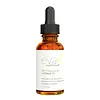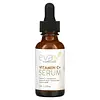What's inside
What's inside
 Key Ingredients
Key Ingredients

 Benefits
Benefits

 Concerns
Concerns

 Ingredients Side-by-side
Ingredients Side-by-side

Aloe Barbadensis Leaf
MaskingSodium Ascorbyl Phosphate
AntioxidantDimethyl Sulfone
SolventCassia Angustifolia Seed Polysaccharide
Skin ConditioningNiacinamide
SmoothingRetinol
Skin ConditioningOlea Europaea Fruit Oil
MaskingSqualene
EmollientCapryloyl Salicylic Acid
ExfoliatingRosa Canina Callus Lysate
AntioxidantCarbomer
Emulsion StabilisingArginine
MaskingMelaleuca Alternifolia Leaf Oil
AntioxidantLavandula Angustifolia Oil
MaskingCananga Odorata Flower Oil
MaskingPhenoxyethanol
PreservativeEthylhexylglycerin
Skin ConditioningAloe Barbadensis Leaf, Sodium Ascorbyl Phosphate, Dimethyl Sulfone, Cassia Angustifolia Seed Polysaccharide, Niacinamide, Retinol, Olea Europaea Fruit Oil, Squalene, Capryloyl Salicylic Acid, Rosa Canina Callus Lysate, Carbomer, Arginine, Melaleuca Alternifolia Leaf Oil, Lavandula Angustifolia Oil, Cananga Odorata Flower Oil, Phenoxyethanol, Ethylhexylglycerin
Water
Skin ConditioningDimethyl Sulfone
SolventSodium Ascorbyl Phosphate
AntioxidantNiacinamide
SmoothingSqualane
EmollientRosa Canina Fruit Oil
EmollientSalicylic Acid
MaskingPhenoxyethanol
PreservativeAcrylates/C10-30 Alkyl Acrylate Crosspolymer
Emulsion StabilisingPentylene Glycol
Skin ConditioningLecithin
EmollientGlycerin
HumectantSodium Hydroxide
BufferingMelaleuca Alternifolia Leaf Oil
AntioxidantLavandula Officinalis Flower Oil
PerfumingCananga Odorata Flower Oil
MaskingRetinol
Skin ConditioningPolysorbate 20
EmulsifyingEthylhexylglycerin
Skin ConditioningAlcohol
AntimicrobialTocopherol
AntioxidantPotassium Phosphate
BufferingCaesalpinia Spinosa Gum
Skin ConditioningPotassium Sorbate
PreservativeSodium Benzoate
MaskingCentella Asiatica Extract
CleansingGeranium Maculatum Extract
TonicEquisetum Arvense Extract
AstringentTaraxacum Officinale Extract
Skin ConditioningWater, Dimethyl Sulfone, Sodium Ascorbyl Phosphate, Niacinamide, Squalane, Rosa Canina Fruit Oil, Salicylic Acid, Phenoxyethanol, Acrylates/C10-30 Alkyl Acrylate Crosspolymer, Pentylene Glycol, Lecithin, Glycerin, Sodium Hydroxide, Melaleuca Alternifolia Leaf Oil, Lavandula Officinalis Flower Oil, Cananga Odorata Flower Oil, Retinol, Polysorbate 20, Ethylhexylglycerin, Alcohol, Tocopherol, Potassium Phosphate, Caesalpinia Spinosa Gum, Potassium Sorbate, Sodium Benzoate, Centella Asiatica Extract, Geranium Maculatum Extract, Equisetum Arvense Extract, Taraxacum Officinale Extract
Ingredients Explained
These ingredients are found in both products.
Ingredients higher up in an ingredient list are typically present in a larger amount.
Cananga Odorata Flower Oil comes from the ylang-ylang flower, Cananga odorata.
Ylang-ylang oil has slight antibacterial, antioxidant and antifungal properties. However, it also contains a number of sensitizing ingredients such as geraniol, limonene, linalool and benzyl benzoate. These compounds are known EU allergens.
The composition of this ingredient depends on the source. Luxury perfumes tend to use higher grade ylang-ylang for their fragrance. Lower grade ylang-ylang is less fragrant.
Learn more about Cananga Odorata Flower OilDimethyl Sulfone is an organic compound that naturally contains sulfur. It is used as a solvent due to its stability. Solvents help mix and stabilize other ingredients.
Studies show taking Dimethyl Sulfone (also known as methylsulfonylmethane) orally may help reduce the depth of wrinkles. We recommend speaking with a professional if you have any questions or concerns about this ingredient.
Ethylhexylglycerin (we can't pronounce this either) is commonly used as a preservative and skin softener. It is derived from glyceryl.
You might see Ethylhexylglycerin often paired with other preservatives such as phenoxyethanol. Ethylhexylglycerin has been found to increase the effectiveness of these other preservatives.
This tea tree oil comes from the leaves of the Tea Tree plant. Tea tree oil has antioxidant, anti-inflammatory, and antimicrobial properties.
According to the book Journal of Profiles of Drug Substances, tea tree helps in reducing acne-causing bacteria such as Propionibacterium acnes. This is due to the Terpinen components of tea tree oil.
Tea tree may cause sensitivity and irritation for some people. This oil naturally contains fragrance such as linalool and limonene.
However, research shows irritation usually occurs when using pure tea tree oil and not in cosmetic products.
Tea tree oil was found to help relieve the symptoms of psoriasis in one study.
Tea tree oil is toxic when ingested. Another study showed it to caused damage to the nervous system of dogs and cats when applied to their skin or given orally.
Learn more about Melaleuca Alternifolia Leaf OilNiacinamide is a multitasking form of vitamin B3 that strengthens the skin barrier, reduces pores and dark spots, regulates oil, and improves signs of aging.
And the best part? It's gentle and well-tolerated by most skin types, including sensitive and reactive skin.
You might have heard of "niacin flush", or the reddening of skin that causes itchiness. Niacinamide has not been found to cause this.
In very rare cases, some individuals may not be able to tolerate niacinamide at all or experience an allergic reaction to it.
If you are experiencing flaking, irritation, and dryness with this ingredient, be sure to double check all your products as this ingredient can be found in all categories of skincare.
When incorporating niacinamide into your routine, look out for concentration amounts. Typically, 5% niacinamide provides benefits such as fading dark spots. However, if you have sensitive skin, it is better to begin with a smaller concentration.
When you apply niacinamide to your skin, your body converts it into nicotinamide adenine dinucleotide (NAD). NAD is an essential coenzyme that is already found in your cells as "fuel" and powers countless biological processes.
In your skin, NAD helps repair cell damage, produce new healthy cells, support collagen production, strengthen the skin barrier, and fight environmental stressors (like UV and pollution).
Our natural NAD levels start to decline with age, leading to slower skin repair, visible aging, and a weaker skin barrier. By providing your skin niacinamide, you're recharging your skin's NAD levels. This leads to stronger, healthier, and younger looking skin.
Another name for vitamin B3 is nicotinamide. This vitamin is water-soluble and our bodies don't store it. We obtain Vitamin B3 from either food or skincare. Meat, fish, wheat, yeast, and leafy greens contain vitamin B3.
The type of niacinamide used in skincare is synthetically created.
Learn more about NiacinamidePhenoxyethanol is a preservative that has germicide, antimicrobial, and aromatic properties. Studies show that phenoxyethanol can prevent microbial growth. By itself, it has a scent that is similar to that of a rose.
It's often used in formulations along with Caprylyl Glycol to preserve the shelf life of products.
Retinol is a gold-standard ingredient for anti-aging. It is a form of Vitamin A and belongs to the class of retinoids that also includes tretinoin.
Why is retinol famous?
It has the most scientific studies backing up its skin benefits out of all the non-prescription ingredients.
Retinol is proven to:
This is why retinol is effective at removing wrinkles, fading dark spots, treating acne, and reducing the appearance of pores.
Studies show retinol is less effective when exposed to UV. Be sure to look for appropriate packaging to keep your retinol potent (similar to Vitamin C).
Using retinol or any retinoids will increase sun-sensitivity in the first few months. Though studies show retinoids increase your skin's natural SPF with continuous use, it is best to always wear sunscreen and sun-protection.
We recommend speaking with a medical professional about using this ingredient during pregnancy.
Retinol may cause irritation in some people, so be sure to patch test. Experts recommend 'ramping up' retinol use: start using this ingredient once a week and work up to using it daily.
Read about Tretinoin
Learn more about RetinolSodium Ascorbyl Phosphate is a form of Vitamin C. It is the salt of ascorbic acid.
This ingredient is more gentle than ascorbic acid. It is also more stable when exposed to light and oxygen.
Vitamin C helps reduce redness, improve skin texture, reduce the effects of aging, reduce the visibility of dark spots, and brighten skin.
Your skin uses Vitamin C to produce collagen and collagen production plays a role in having a strong skin barrier and plump skin. As an antioxidant, this ingredient also helps reduce the signs of aging such as fine-lines and wrinkles.
VItamin C helps brighten skin by blocking the process of skin darkening.
In a 2011 study, Sodium Ascorbyl Phosphate was found to have antibacterial properties. This may help treat acne.
Read more about other types of Vitamin C:
Learn more about Sodium Ascorbyl Phosphate